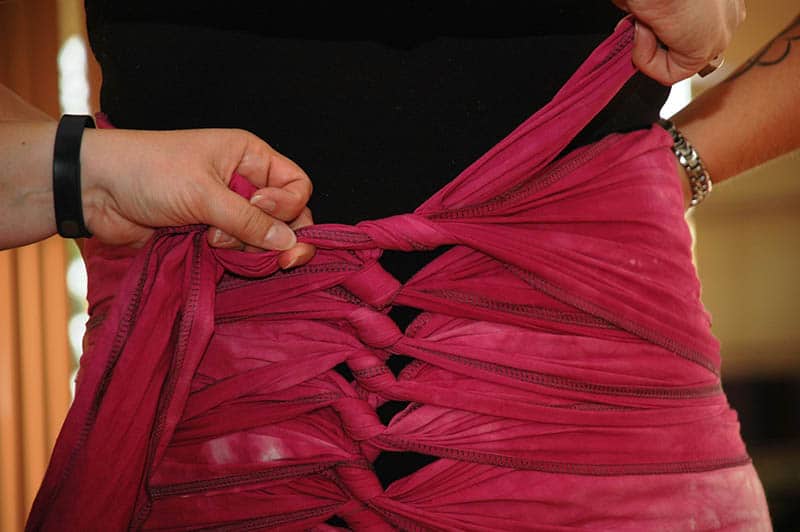In an era when women are pressured more than ever to snap back into their pre-baby shape, it comes as no surprise that postpartum belly binding has become all the rage!
Postpartum belly binding is the practice of wrapping the belly shortly after giving birth with a piece of cloth or using a belly wrap to provide support and help with the recovery of the abdominal muscles.
But just because this practice has grown in popularity in recent years doesn’t mean that it’s brand new!
Actually, women have been wrapping their post-baby bellies for hundreds of years now due to its many benefits.
Although belly wraps have changed and become more modern, the idea is still the same – to give new moms the support they need as they begin their postpartum recovery journey!
However, it’s important to know that belly wraps are not all-powerful, and sadly, they can’t make you lose weight or change your body shape overnight.
So, keeping reading to get the 411 on belly binding and what it can do for you!
What is postpartum belly binding?
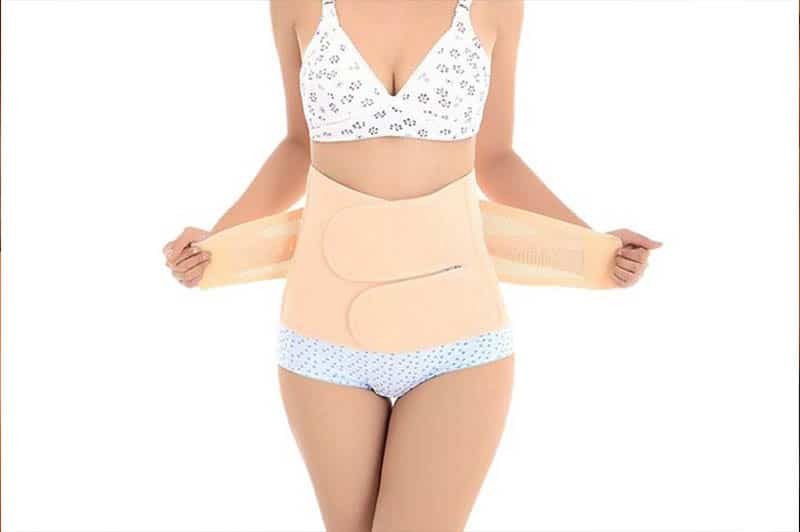
Source: momjunction.com
Postpartum belly binding or belly wrapping seems to have become very popular over the last few years.
Famous women and social media influencers have definitely helped more women find out about this practice, but it’s a mistake to assume that it’s something brand new.
In fact, belly binding has been practiced by women all over the world for many years.
Simply put, it involves wrapping a piece of cloth tightly around the new mom’s abdomen.
Traditionally, women used muslin, which is a very light and breathable material, but today, there are many ready-to-use belly wraps available for purchase.
Still, you can go the “old school” route and use a cloth to bind your belly if you’d like!
No matter which material you use, a belly binder will help with keeping your abdominal muscles in one place during your postpartum recovery and is beneficial to your healing process.
Different types of belly wrapping
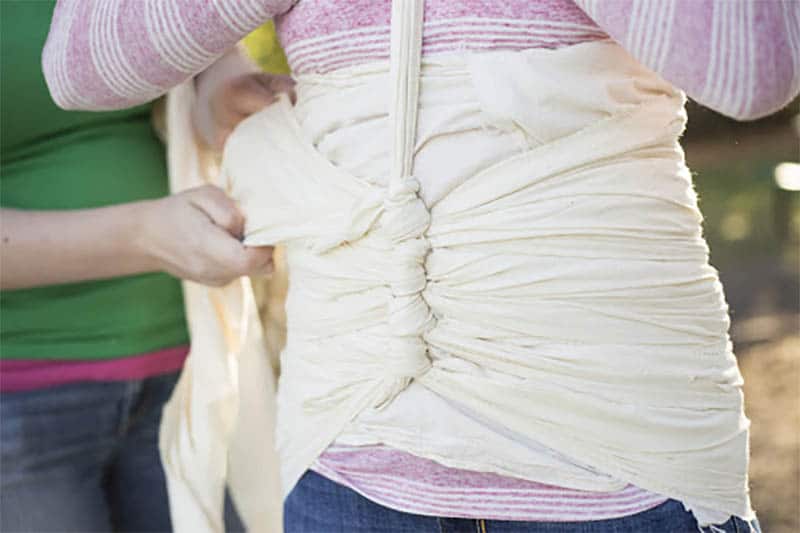
Source: daydreamdoula.com
If you have decided that you’re going to try a binder post-birth, there are two main ways of doing so:
- Purchasing a ready-to-wear belly wrap;
- Going traditional and giving Bengkung belly binding a try.
The Bengkung method comes from the Malaysian tradition, where you wrap a big piece of cloth around your belly after giving birth.
The great thing about this method is that you are completely in control of the fit since you need to wrap it yourself.
You can make it tighter in some areas and looser in others as the days go on.
In addition, Bengkung wraps are much more affordable than the ready-to-wear ones. But there is a bit of a drawback when it comes to the Bengkung method – first, you need to learn how to wrap it.
When you look at it fully wrapped around a woman’s belly, you will notice that it appears as if there is an intricate braid going down the middle.
This braid will need some practice, so if you’re not ready to spend a couple of hours practicing getting it right, then you should probably skip this method.
On the other hand, once you do get the hang of it, you will be able to wrap it around your belly in just a few minutes – it all depends on how much time you have on your hands!
Moms who have had a C-section can use the Bengkung method of postpartum belly binding, but they do need to wait for their scar to heal up – this can take anywhere from 4 to 6 weeks.
Benefits of belly binding
And here are some of the benefits of using a postpartum belly bind that women have been reaping:
- helps with abdominal wall muscle retraction;
- helps with diastasis recti;
- can reduce swelling;
- improves posture;
- reduces lower back pain;
- reduces the amount of postpartum bleeding time by putting a bit of pressure on the uterus, helping the blood come out faster.
Diastasis recti
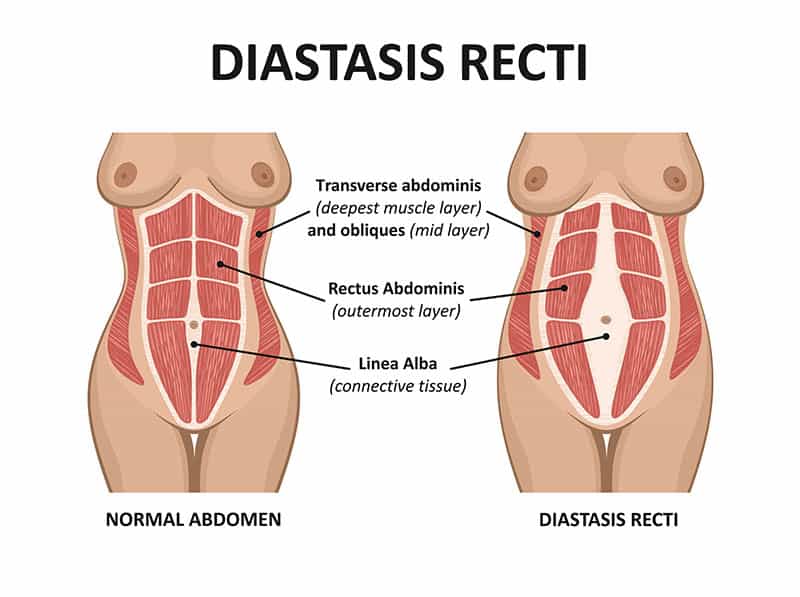
What’s more, it’s really common among postpartum women and if you are pregnant now, it’s very likely that you will experience diastasis.
Thankfully, a binder can help the postpartum body deal with this separation of the muscles! Now, a binder won’t cure or treat it, but it will protect this sensitive area from further damage.
To successfully treat diastasis, you should see a physical therapist who will be able to come up with a good plan for your muscles to go back to normal.
Also, make sure to inquire whether the physical therapist is experienced in treating diastasis – that way you will know that you’re in good hands!
When can I start belly binding?
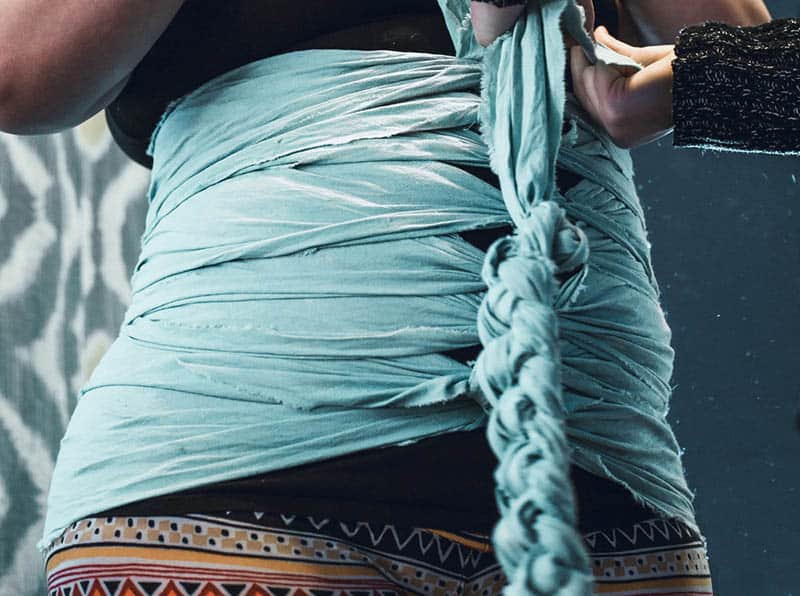
Source: atenderbeginning.com
A lot of moms-to-be purchase an abdominal binder in the months leading up to their due date, but as to when you can put your binder on will vary depending on how you give birth.
For moms who have had a C-section, they will need to wait until their incision scar has healed enough to wear a wrap over it to prevent irritation or infection – although there are wraps made specifically for mommies who have had a belly birth.
RELATED: C-section Recovery Belt: The 7 Best Choices For Postpartum Recovery
Moms who have had a vaginal delivery can start using a postpartum belly binder much earlier.
Some even choose to do so right after giving birth or within the first few days postpartum.
The reason to start binding as early as possible lies in a hormone called relaxin. It’s responsible for relaxing and loosening the woman’s muscles in preparation for labor.
After the baby is born, the muscles still feel very loose, so a binder can add the right amount of support to make you feel more comfortable as you begin your recovery journey.
How long you need to wear your binder every day is going to depend on the manufacturer’s instructions.
For example, the very popular Belly Bandit wrap can be worn all day and all night (as long as you’re feeling comfortable in it) for 6 to 8 weeks.
When shopping for a belly binder, consider models that are not difficult to put on and that are relatively discreet.
After all, if you’re going to wear it all day, you probably don’t want it to show too much through your clothing.
And having a binder that’s easy to take on and off will encourage you to wear it more so that you can get the maximum benefits out of it!
How to belly wrap safely
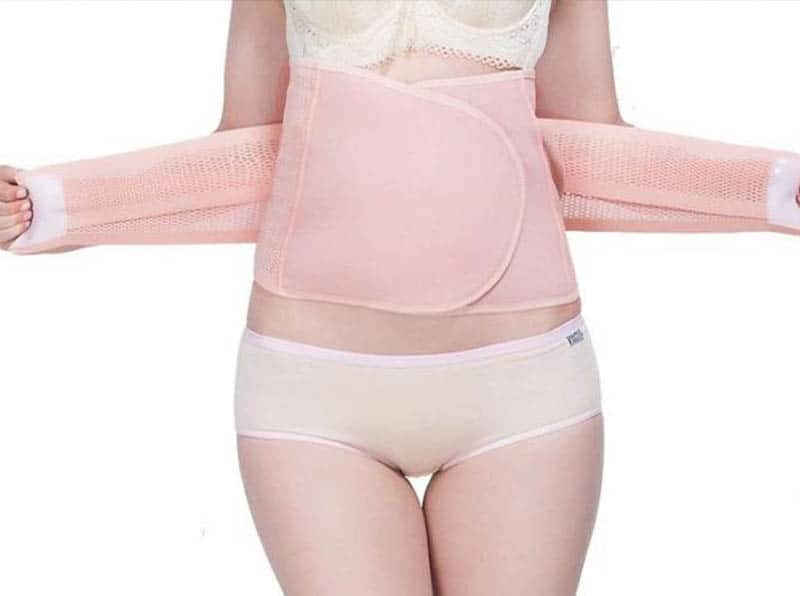
Source: midwiferycarenyc.com
Belly binders are generally very safe to use and don’t pose a risk to your health.
That being said, tell your doctor or midwife that you would like to use one so that they can give you the green light.
Most moms can start using their post-pregnancy belly wrap with no trouble, but there might be health reasons that are particular to your situation that could prevent you from using one – it’s always better to be safe than sorry!
1. Don’t wrap too tightly
Getting overzealous in using your belly binder and wrapping it too tightly around your midsection is not the right way to go with your postpartum wrap.
A very tight fit could put too much strain on your pelvic floor and cause uterine prolapse, for example.
Since this condition requires medical treatment, it’s very important that you are mindful of how tight the fit of the belly wrap is.
But how do you know what the right amount of tightness is? After all, belly binding too loose would defeat the entire purpose, so finding the right balance is key.
To see if your belly wrap is too tight, pay attention to your breathing – if you can’t take normal breaths, then you should loosen the fit a little bit until you can breathe normally again.
2. Don’t wear it for too long
While individual belly binders come with specific instructions on how to wear them and for how long every day, there is a set time frame for how many weeks postpartum you should bind your tummy.
Most experts agree that wearing an abdominal binder past 12 weeks after giving birth is simply not productive and can even have the effect of damaging your core muscles.
Because the body will begin using the binder for support, instead of the muscles, your core will weaken.
Since your core muscles support you in everything you do on a daily basis, strengthening them is extremely important.
You can incorporate a few postnatal workouts into your daily schedule to help you regain control of your abdominal muscles, especially if you would like to go back to your pre-pregnancy size.
While this will be much harder work than wearing a simple belly wrap, it’s much better for your health in the long term and will help you feel like you’re in control of your own body once again.
Misconceptions about postpartum belly binding
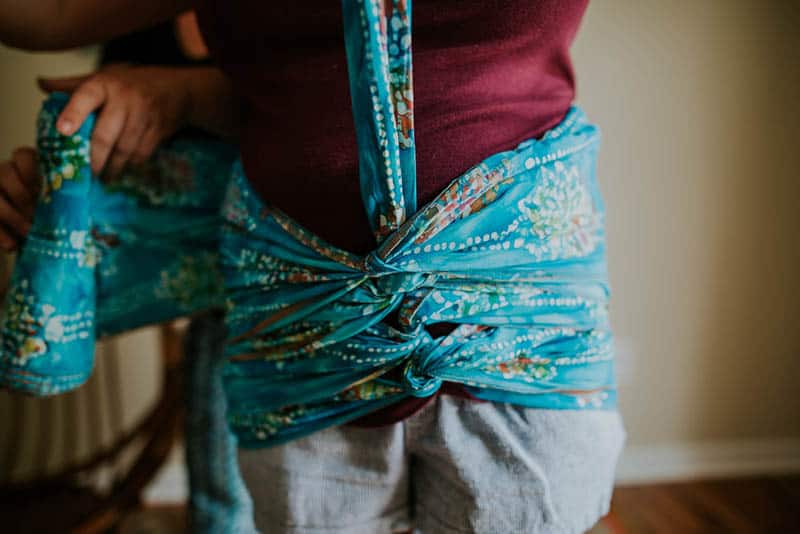
Source: hatchedathome.com
Even though postpartum belly binding has really taken off in the last couple of years, it’s easy to get lost in an ocean of misleading advertising and celebrity endorsements without taking into account the bigger picture – “bouncing back” after birth is a long process!
Unfortunately, new moms feel so much pressure to go back to their pre-pregnancy body as quickly as possible that they might believe some misconceptions about what belly binding can do for them.
1. Weight loss
Most women do lose a certain amount of baby weight after giving birth, regardless of whether they start exercising or change their diet.
However, this has nothing to do with binding their belly but is something most postpartum women experience.
Keeping this in mind, all soon-to-be-moms and new moms should know that postpartum belly wraps do not help you lose weight, no matter what the advertisement says.
Losing weight post-baby is a process, and involves exercising and eating right.
Naturally, it will take much longer to lose the weight, too.
Remember that you were pregnant for almost a whole year, so don’t expect your postpartum body to snap back to how it used to be overnight!
But I always make sure to talk to moms about self-acceptance and loving their new body – age will change all of us sooner or later, so learning how to love yourself is very valuable in the long run!
2. Waist shaping
Many belly binders are also marketed as waist trainers or corset-like products that can allegedly whip your waist into a beautiful hourglass shape after regular daily use.
The truth is, no matter what kind of binder you use, it will not have a permanent effect on your body shape.
Only diet and exercise can do this, and even they have limitations because of the natural ways an individual woman’s body is shaped – some of us have smaller hips, bigger shoulders, or longer torsos, and no waist training magic can alter that. Except for surgery, of course.
Another problem with waist trainers is that they only help women lose a bit of water weight, which naturally comes back once you take the trainer off and start drinking liquids again.
To sum up
After going through pregnancy and childbirth, you can definitely say that your belly has been through the wringer.
But you have an amazing little baby to show for it, and that makes the whole journey worth it!
Now, you will get to see just how resilient and incredible your body is as you make your way through your postpartum recovery.
And postpartum belly binding is a perfect way to give your belly the support it needs to make those first weeks after giving birth more comfortable and to speed up your healing.
Combine this with a healthy diet and appropriate postnatal workouts, and I’m sure you will be feeling like your old self in no time.
Until then, enjoy these precious first weeks with your little one and savor every minute of it!
Like this post? Please share or pin it for later. You can also stay in the loop and follow us on Facebook, Instagram or Pinterest.
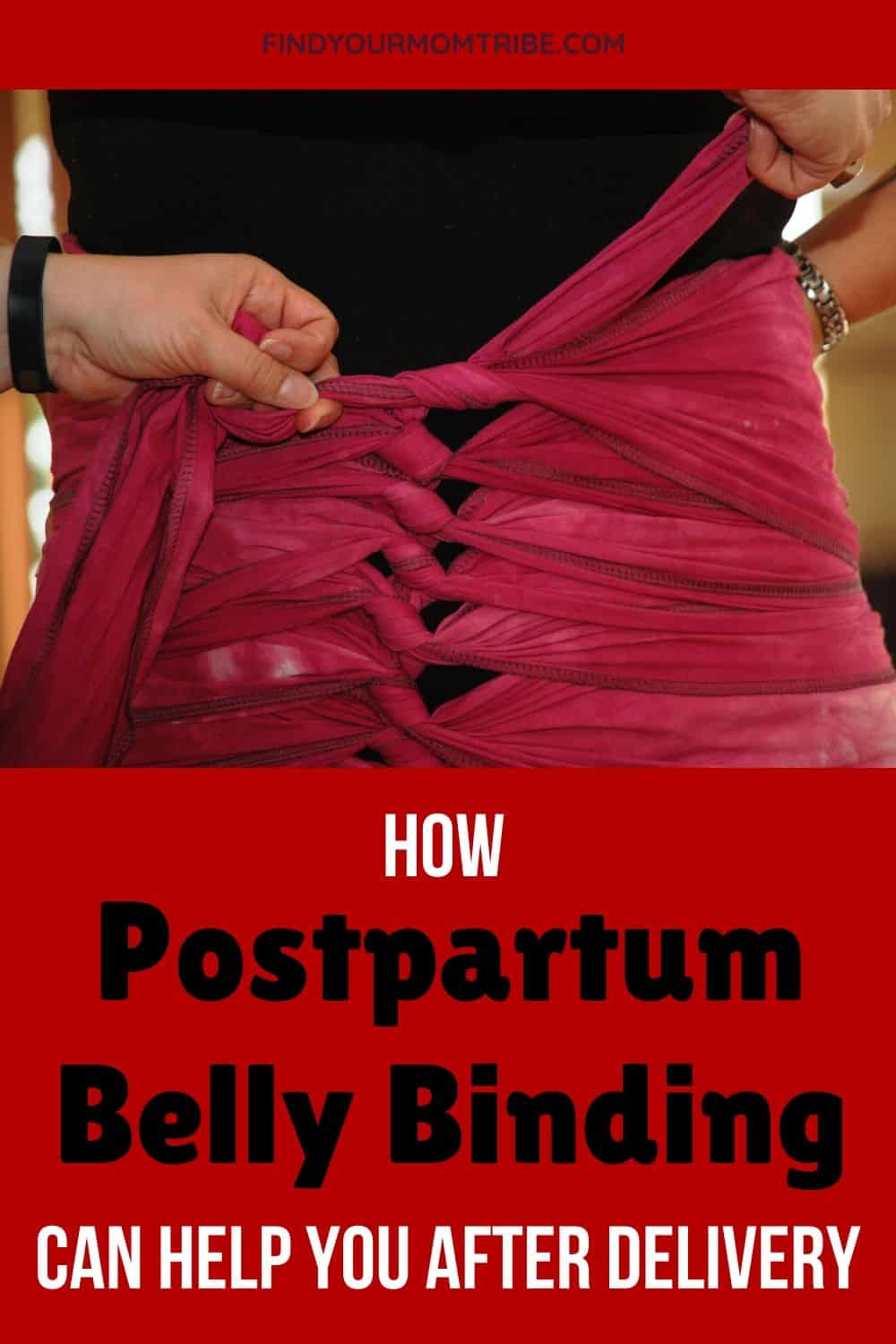
This post contains affiliate links. Please see our full disclosure for more info.

